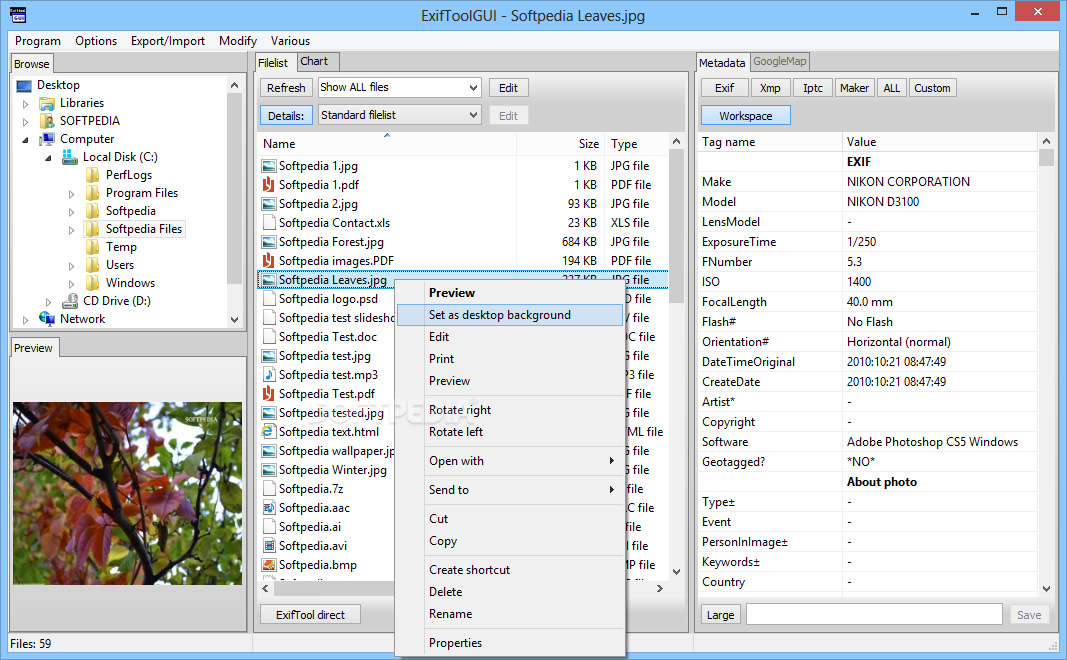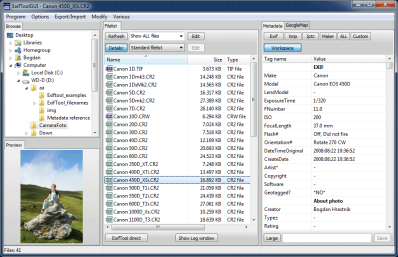

At least I haven't been able to get it to work in spite of following the directions of people who have gotten it working. It was great! It allowed for that point and click user interface and even allowed one to access the command line interface of ExifTool directly from within ExifToolGUI itself!Įxif Tool works with Win 10, but ExifToolGui does not, though some claim to have gotten it to work. That's when I discovered ExifToolGUI written by Bogdan Hrastnik.

I wanted a point and click type of user interface.

I personally found it to be a pain in the neck for one photo at a time. It is very powerful in that a command line interface allows for many subtle changes on a batch of photos. I want an easier, quicker way to modify the metadata, especially if it is only one photo at a time. To me, the command line is only a viable solution if I have a batch of photos to alter. That means one needs to know how to invoke the command line interface of your operating system, and then enter a command similar to this one:Įxiftool -artist=”Glen Barrington” StAugustine001.jpg StAugustine002.jpg StAugustine003.jpg The line above inserts the name "Glen Barrington" into the metadata field callled "artist" in the three jpg photos called StAugustine001, StAugustine002, and StAugustine003. The problem is, its own interface that everyday users can access is pretty primitive, it is a command line interface. You can learn more and download Exiftool at this website: It is an Open Source library of commands written by Phil Harvey, that allow other programs to manipulate, add, change, and delete embedded metadata such as the Exif and IPTC data that the file format you are using allows. So a very common need is to copy the metadata found in the source photo (such as the raw or the Out of camera jpg) to the completed photo that comes back from the editor.Īnd that's where ExifTool comes in. (Yeah, I'm looking at YOU PaintShop Pro!). This is particularly true when you send photos to the editor on a 'round trip' from a photo manager. The problem is, many photo editors strip all or some of the exif data from the photos when they save it. Many photo managers, like ACDSee and Lightroom, allow one to search on that information, so it makes finding very specific types of photos pretty easy. They want the camera, lens, and exposure information embedded within the photo. Most people want, at the very least, their name and copyright information embedded in the photo. Įmbedded metadata in a photo is pretty important. My apologies to any who this inconvenienced. I have changed this article to reflect this. The export/import capabilities of PhotoME are primitive and incomplete at best. I have discovered, one day after publishing this article that I am unable to export data from my ORF files to other files. I have to withdraw my support for PhotoME and instead will now use ExifPilot for my Gui based exif editing.


 0 kommentar(er)
0 kommentar(er)
